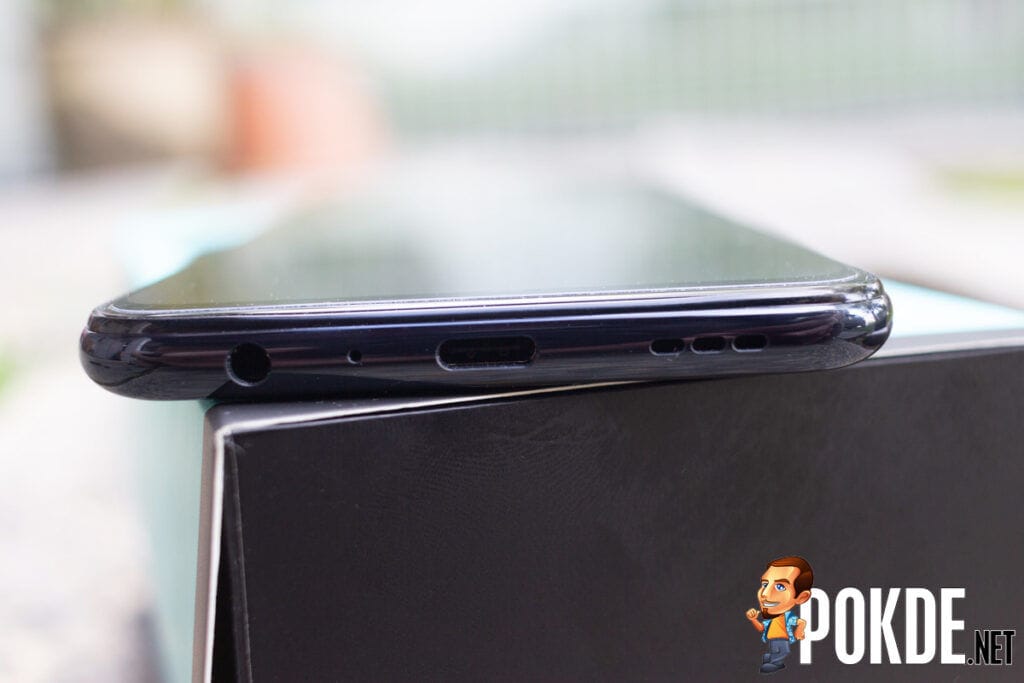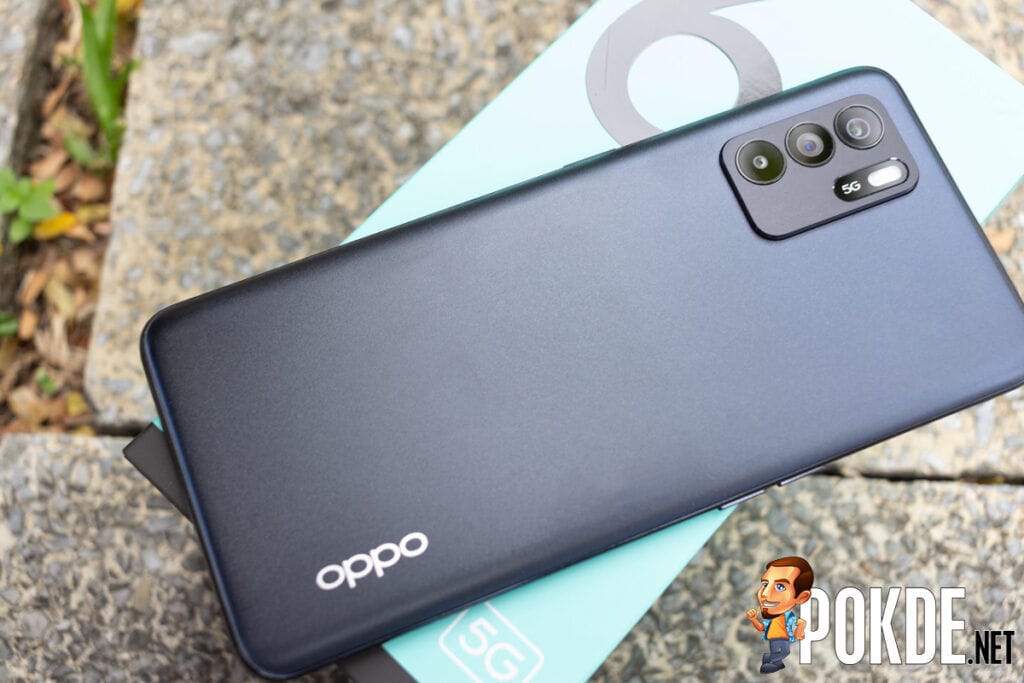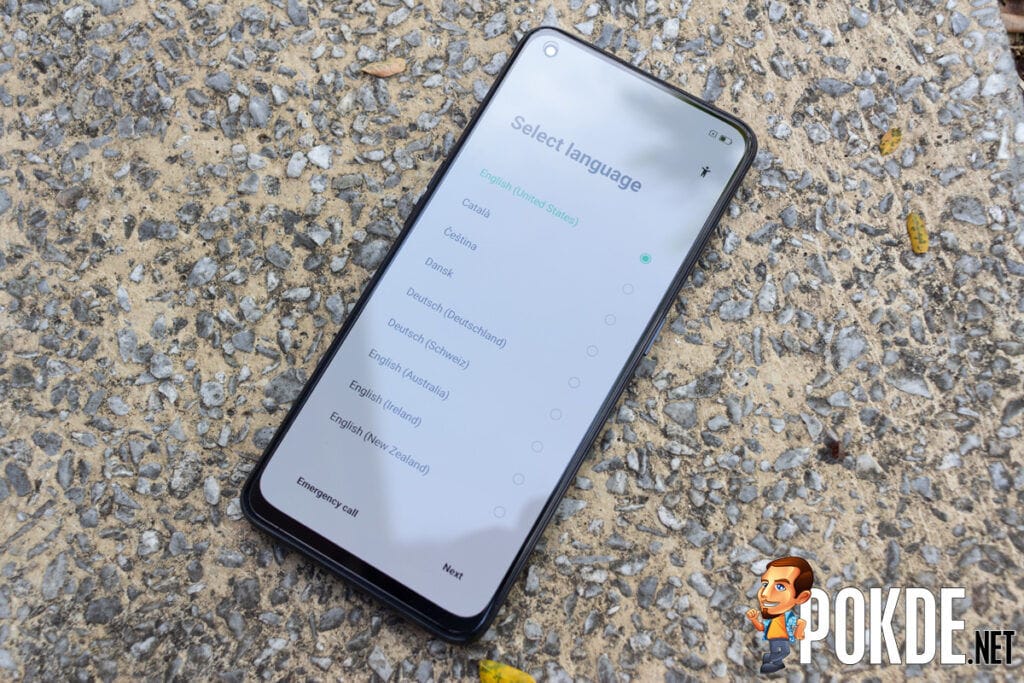OPPO Reno6 Z Review — Upping Your Bokeh Game
-
Efficiency - 8.1/10
8.1/10
-
Features - 7.8/10
7.8/10
-
Materials - 8.1/10
8.1/10
-
Performance - 7.7/10
7.7/10
-
Portability - 8/10
8/10
-
User Experience - 7.5/10
7.5/10
-
Value - 7/10
7/10
Summary
If you’re a fan of bokeh/depth effects, this will definitely satisfy you, especially in poor lighting conditions.
Overall
7.7/10Pros
+ Nice matte finish at the back
+ Fast 30W VOOC Flash Charge 4.0
+ Decent AMOLED display
+ Speaker is loud enough despite only being a single unit
+ Bokeh Flare does the job in low-light
Cons
– Price is a bit too high
– Lacks a high refresh rate to take it to the next level
– Pre-installed apps
We’ve taken a look at OPPO’s Reno series for quite some time now. Now, we dive deep into this year’s offering with this OPPO Reno6 Z review. What exactly does it offer? Let’s get started.
Unboxing

Inside the box, you can expect to find the following items inside:
- OPPO Reno6 Z
- Soft TPU case
- SIM ejector
- Documentation
- Charging brick
- USB-C cable
- 3.5mm earphones
Appearance
On the front, it sports a 6.4-inch AMOLED display. At the top right is where the 32MP selfie camera is located. As you can see, there are slight bezels around the corner. I’ve noticed that a number of smartphones have a big chin at the bottom, but it isn’t that noticeable here.

On the bottom, you can find the good old 3.5mm headphone jack, microphone, USB-C port, and the speaker grille.
On the left side, you can find the volume rockers while the right side only sports the power button for the device.

There’s only the secondary microphone hole to be found here on the top.

Flipping over to the back, you can see that we’ve got our hands on the Stellar Black variant of the OPPO Reno6 Z. It comes in a nice matte finish where the general colour is black but you can see hints of a blue hue at different lighting. Of course, the OPPO branding is at the usual bottom right corner and there’s the 64MP triple camera setup.
OPPO Reno6 Z Specifications
| CPU | MediaTek Dimensity 800U 5G Octa-core (2×2.4GHz Cortex-A76 & 6×2.0GHz Cortex-A55) 7nm |
| GPU | Mali-G57 MC3 |
| Memory | 8GB |
| Storage | 128GB (expandable via microSD) |
| Display | 6.4-inch AMOLED (1080×2400), 60Hz |
| Rear Camera | 64MP f/1.7, PDAF 8MP f/2.2 ultra-wide 2MP f/2.4 macro Night Mode, AI, HDR, portrait mode, Beautify, Pro Mode, Bokeh Flare |
| Selfie camera | 32MP f/2.4 Portrait mode, HDR, AI, Bokeh Flare |
| Connectivity | 5G Band n1/n3/n5/n7/n8/n18/n19/n20/n26/n28/n66 LTE Band 1/2/3/4/5/7/8/18/20/26/28/38//39/40/41 Dual SIM Wi-Fi 802.11 a/b/g/n/ac (2.4GHz & 5GHz) Bluetooth 5.0 USB Type-C |
| Battery | 4310mAh 30W VOOC 4.0 fast charging |
| Dimensions | 160.2 x 73.3 x 7.97mm |
| Weight | 173g |
| Ingress protection | N/A |
Performance

We start off the synthetic tests with Antutu V9 and the OPPO Reno6 Z falls behind when compared to the vivo V21, which uses the same Dimensity 800U chipset. Surprisingly the previous OPPO Reno5 performed better here.

We see a more positive result here on Geekbench 5 but it still falls short from the Reno5’s scores in both Single-Core and Multi-Core tests.

In terms of graphical performance, we’re not surprised to see the scores for the device. It’s not bad, but not impressive either, which is to be expected from a mid-range device such as this.

We had to switch up the models on the benchmark for PCMark as they’ve released a newer version recently. Regardless, we can see how the phone fared against some of the more recent devices in the market here on PCMark’s Work 3.0 test.

Finally we head to the battery test and here’s where the phone really shines. Despite packing the smallest battery capacity out of the list, the OPPO Reno6 Z lasted quite long. This could be due to the lack of higher refresh rate that others on the list provided, so it consumed less power.
As for personal usage, I found that I could go nearly two full days before I need to charge the device again, which is good in my opinion. Of course, this also depends on your usage and in my case, there’s the usual social media usage such as Facebook, WhatsApp, Telegram, Instagram, and the occasional YouTube videos.
Besides the battery being efficient, it’s also helped by the fact that it fully supports the 30W VOOC Flash Charge 4.0 charger, where it manages to juice up the phone from 15% to full in less than an hour.
User Experience

As mentioned earlier, the phone sports a 6.4-inch AMOLED screen that offers a standard 60Hz refresh rate. Some might argue that the lack of high refresh rate is a downer but we can’t really complain about the display as the colours are vibrant and definitely more than enough for viewing content.
Continuing on the topic of media consumption, despite the phone only coming with a single speaker, it’s surprisingly loud. There is the option for wired connection thanks to the 3.5mm headphone jack if you want to have a better audio experience.

I pretty much like the rear design, where it comes with a nice matte finish. I’d take this over a glossy finish any day, and it feels great to hold. Usually I’d use the phone case on review products, but it’s too nice on the hands that I opted not to with this one. The colour however is a bit plain for me, it would’ve been nicer if we got our hands on the other colour variant instead but of course, that comes down to personal preference.

The phone runs on the latest ColorOS 11, which is based on Android 11. If you’ve used an OPPO smartphone before, the experience is similar and generally, it’s a decent skin. While we did say that the lack of a higher refresh rate helped in prolonging its battery life, having it would result in a buttery smooth UI experience. You win some, you lose some at this point.
Another thing that’s worth noting is that the phone comes pre-installed with bloatware. You might use some of them, but I usually don’t bother with them.

As for the camera UI, they’ve improved on the complaints that I had from their OPPO A74 which I reviewed previously. Everything’s on hand, easy to access, and if you’re not digging the looks, you can easily customize it, which is a nice touch.
As is the case with most devices, the OPPO Reno6 Z captures decent shots in good lighting. If you are a big fan of macros, they’ve done some tweaks to the software so your shots aren’t as overexposed as the OPPO A74.
One of the key selling points of the phone is the Bokeh Flare mode. Using the mode in daytime, it gives a sort of a cartoonish look to it. While I’m not a big fan of it, you might fancy the look. With that being said, it’s actually pretty useful, especially in low-light conditions. You can clearly see the difference that it makes, making the selfie clearer and with more details.
You may check out the full-sized photo samples by clicking the link right here.
OPPO Reno6 Z Verdict

Priced at RM1,699, I think that it’s a bit higher than what I would’ve liked. Despite that, I’d still say that it’s a good enough device thanks to some of the features that it brings, especially the design, Bokeh Flare mode, and fast charging. If you want to get the phone, I would suggest you to take advantage of the pre-order that they are having (at the time of writing) which gets you freebies worth RM799. With that, I award the OPPO Reno6 Z with our Bronze Pokdeward.
We would like to thank OPPO Malaysia for providing us with the OPPO Reno6 Z that was used in this review. You can get your hands on the OPPO Reno6 Z right here!













































